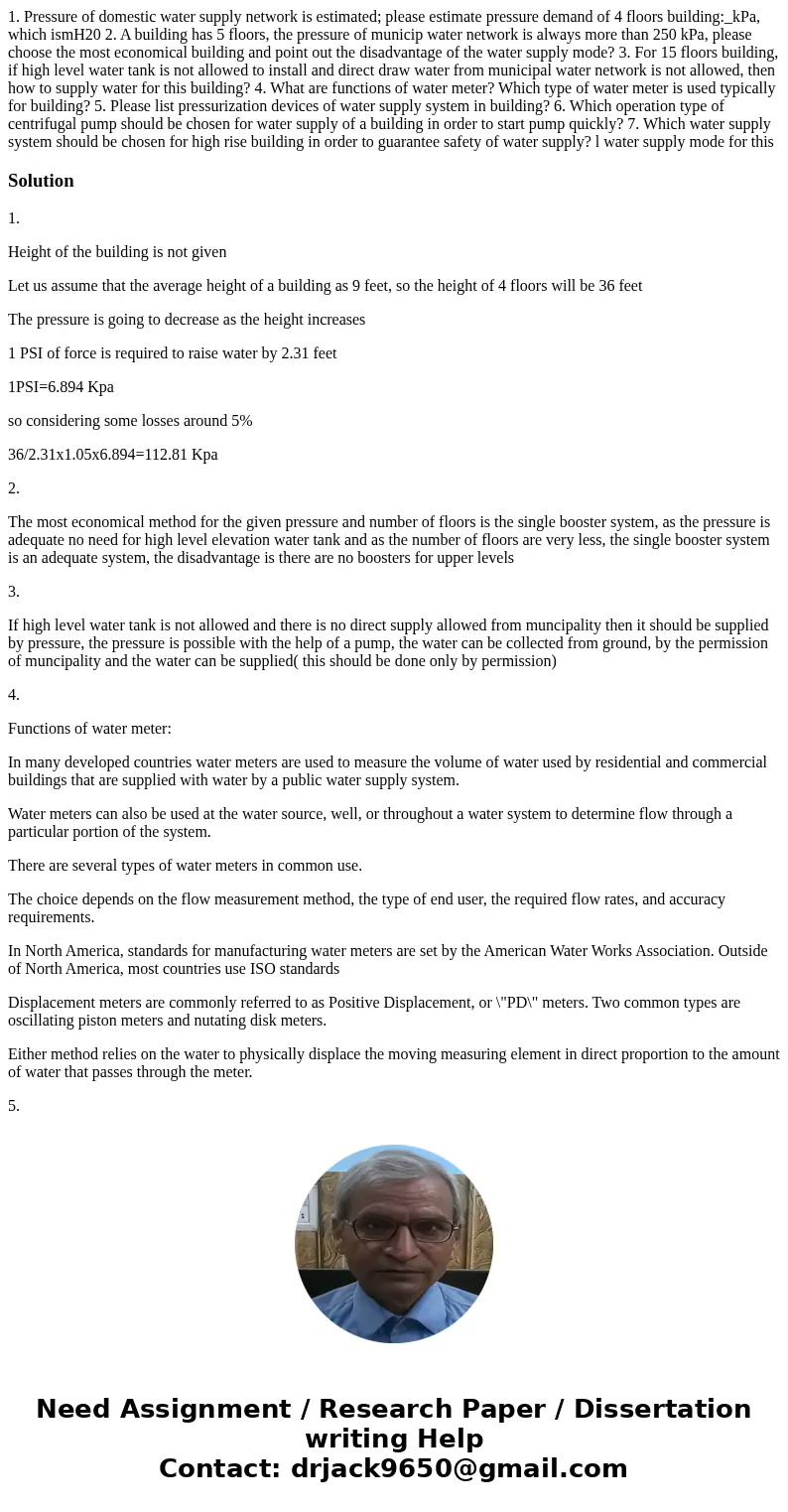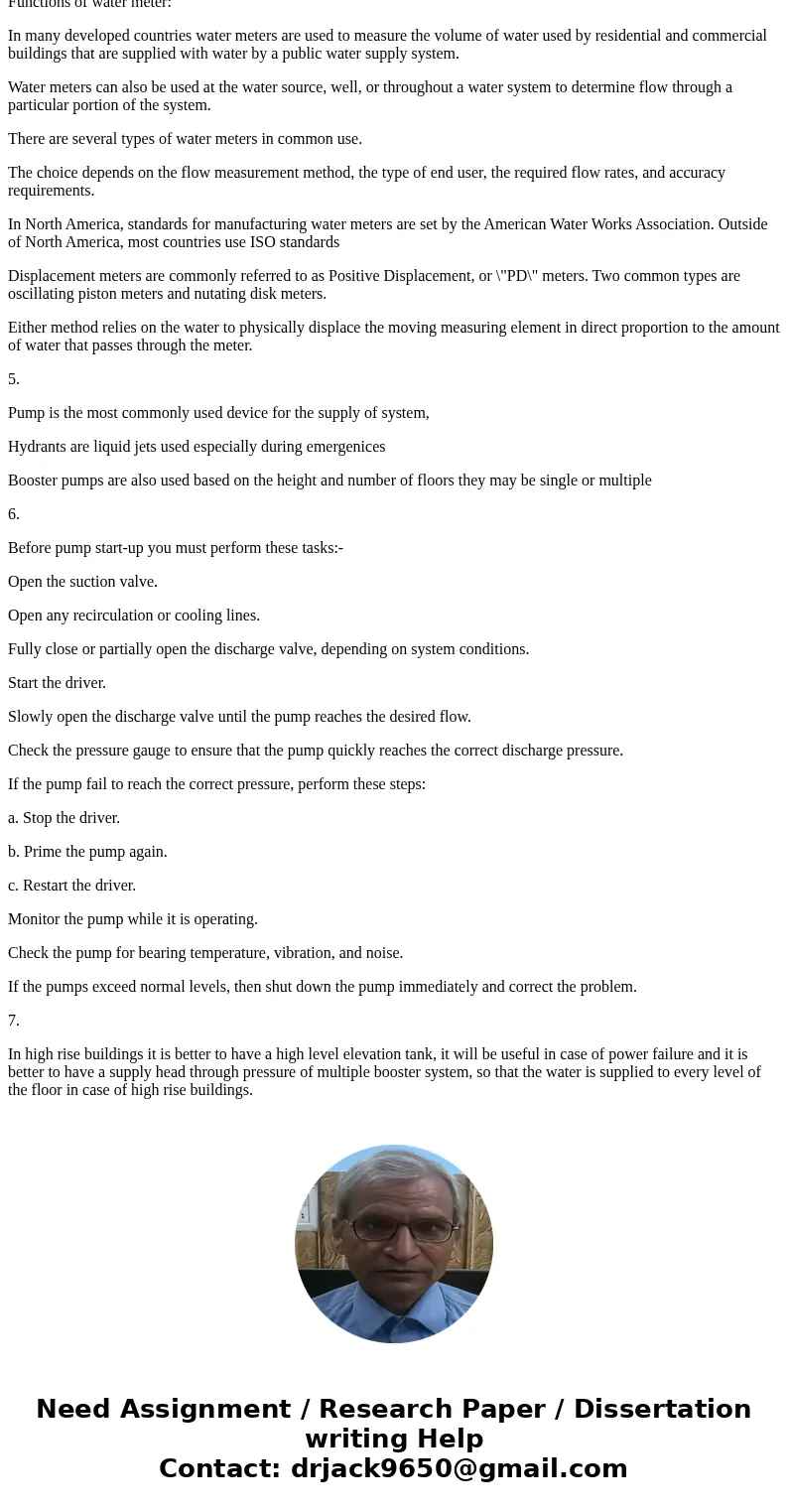1 Pressure of domestic water supply network is estimated ple
Solution
1.
Height of the building is not given
Let us assume that the average height of a building as 9 feet, so the height of 4 floors will be 36 feet
The pressure is going to decrease as the height increases
1 PSI of force is required to raise water by 2.31 feet
1PSI=6.894 Kpa
so considering some losses around 5%
36/2.31x1.05x6.894=112.81 Kpa
2.
The most economical method for the given pressure and number of floors is the single booster system, as the pressure is adequate no need for high level elevation water tank and as the number of floors are very less, the single booster system is an adequate system, the disadvantage is there are no boosters for upper levels
3.
If high level water tank is not allowed and there is no direct supply allowed from muncipality then it should be supplied by pressure, the pressure is possible with the help of a pump, the water can be collected from ground, by the permission of muncipality and the water can be supplied( this should be done only by permission)
4.
Functions of water meter:
In many developed countries water meters are used to measure the volume of water used by residential and commercial buildings that are supplied with water by a public water supply system.
Water meters can also be used at the water source, well, or throughout a water system to determine flow through a particular portion of the system.
There are several types of water meters in common use.
The choice depends on the flow measurement method, the type of end user, the required flow rates, and accuracy requirements.
In North America, standards for manufacturing water meters are set by the American Water Works Association. Outside of North America, most countries use ISO standards
Displacement meters are commonly referred to as Positive Displacement, or \"PD\" meters. Two common types are oscillating piston meters and nutating disk meters.
Either method relies on the water to physically displace the moving measuring element in direct proportion to the amount of water that passes through the meter.
5.
Pump is the most commonly used device for the supply of system,
Hydrants are liquid jets used especially during emergenices
Booster pumps are also used based on the height and number of floors they may be single or multiple
6.
Before pump start-up you must perform these tasks:-
Open the suction valve.
Open any recirculation or cooling lines.
Fully close or partially open the discharge valve, depending on system conditions.
Start the driver.
Slowly open the discharge valve until the pump reaches the desired flow.
Check the pressure gauge to ensure that the pump quickly reaches the correct discharge pressure.
If the pump fail to reach the correct pressure, perform these steps:
a. Stop the driver.
b. Prime the pump again.
c. Restart the driver.
Monitor the pump while it is operating.
Check the pump for bearing temperature, vibration, and noise.
If the pumps exceed normal levels, then shut down the pump immediately and correct the problem.
7.
In high rise buildings it is better to have a high level elevation tank, it will be useful in case of power failure and it is better to have a supply head through pressure of multiple booster system, so that the water is supplied to every level of the floor in case of high rise buildings.


 Homework Sourse
Homework Sourse